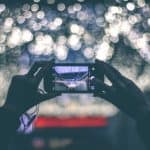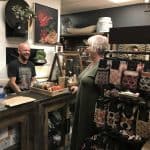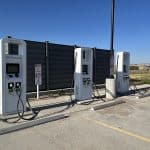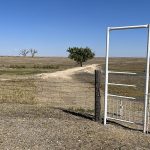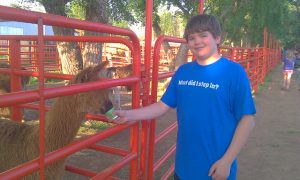
Changing your questions can help you change the leadership of your community, empowering a new generation to lead. Photo by Becky McCray.
Guest Post by Paula Jensen
Leaders are the essence of small towns and rural communities. The success or failure of any housing, community or economic development efforts in the places we call home often rests upon the level of engagement and investment of local citizen leaders. Yet, in so many communities I work in across South Dakota there is an invisible divide holding back the development of a strong leadership base. I hear experienced leaders saying, “Young people just don’t want to be involved in the community!” and I hear emerging leaders saying, “The people in charge won’t let us try anything new!”
So, I am asking you, “How can we empower more people to lead in our rural communities?”
To begin searching for a solution to this question, I want to help you understand two community leadership systems that exist:
- Most community leadership systems currently operate in a traditional hierarchy – meaning top-down (like a triangle) – the board’s officers propose ideas to the members based on their knowledge of what the community needs. Then, following a decision of the board, the tasks gets allocated to the members who carry out the projects with board supervision. Traditional leadership systems define levels of authority and decision-making within the organization and invite you to join the work they are currently doing.
- The non-traditional community leadership system being implemented by some rural communities has a core leadership team that is structured as a network – meaning connected (like a circle) – with the basic goal of allowing distributed decision-making to empower and raise up resident leaders while giving everyone in the community the opportunity to identify priorities and go to work on projects they are passionate about. The non-traditional community leadership system can be chaotic and allows community leaders to collaborate, innovate, dream, and experiment which creates increased optimism and hope for new possibilities within the community.
The two systems listed above are quite different, yet if we are going to show emerging leaders that they do have the power to innovate and have real impact on the community, then we need to begin transforming the community’s leadership structure.
Experienced community leaders can initiate this process by asking good questions, listening with curiosity, and taking new ideas seriously. Below are some sample questions to help these transformational conversations begin.
Questions to transform rural leadership:
- Open Ended Questions – What needs to be done?
- Challenge Status Quo – Why must it be done that way?
- Learner Mindset – What is good or useful about this?
- Forward Looking – What possibilities does this open up?
- Optimistic – What can we learn from this?
- Empower Others – What are you trying to accomplish?
- Build Relationships – How solid are our connections with others?
- Understand Self – What do I need to reflect on to move us all forward?
- Deal with Dependency – Would you like people to solve their problems rather than coming to you for answers?
- Serve Humbly – How can I help you?
- Encourage Action – What will you commit to do by when?
- Evaluate – What does our leadership team do that gets in the way?
- Listen – Are we listening to each other with curiosity?
- Involve All Stakeholders – What are our common areas of interest?
- Enable Change – What will you need from us in the future?
- Develop Vision and Values – Are we being honest with ourselves?
The responsibility of building a pool of leaders in our rural communities falls to both sides. Experienced leaders must let go a little bit, and emerging leaders must build a foundation of trust. This will allow a smooth community leadership structure transformation with minimal chaos – ultimately good for the future of our rural communities.
So, if they want to lead, empower them to lead. #Iamrural
New to SmallBizSurvival.com? Take the Guided Tour. Like what you see? Get our updates.






